Smolensk, Russia 115k/71m***
7 September 2003
Smolensk
115km, 71 miles ***
With no restaurant in the hotel, we had breakfast under sunny (!) cold skies on the side of the road as we readied our departure from Orsa.
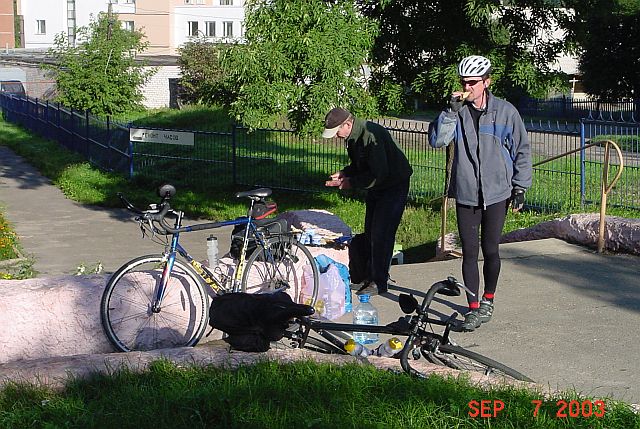
We rode about 10km north on the main road until we hit the M1 highway again, and then kept up our NE route. The road varies considerably from place to place in both number of lanes and condition, and much of it is under construction. There’s not much to see but farm fields and rural wooden homes, but we came across this monument about 30km into the day.
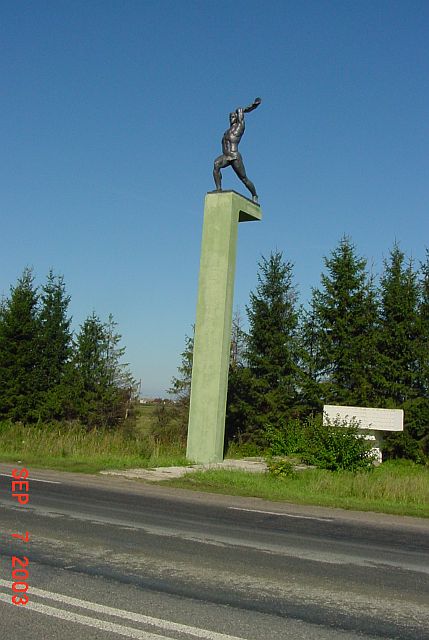
I have no idea what this is for. Here’s a shot of the road, looking back. They tore the bike lane up to hell. This also gives you some idea of the view.
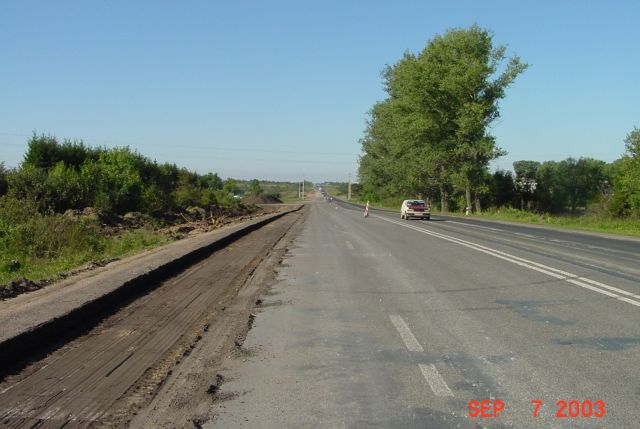
The highlight of the day was to be the border crossing, 50km from Orsa. They waved us past the Belarus exit checkpoint.
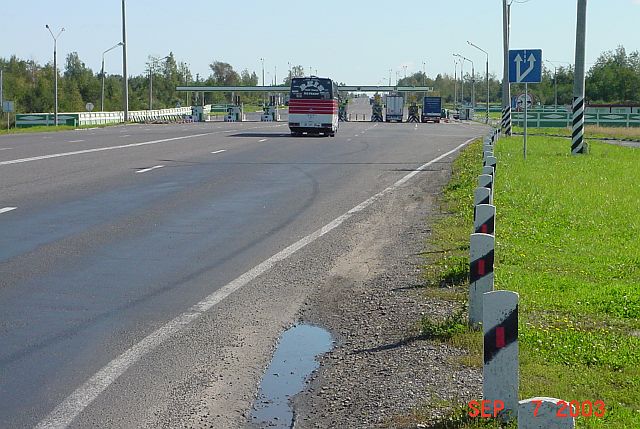
We we’re looking for some hassle and maybe a big “Welcome to Russia” sign, but no one paid any attention to us at all. It was impossible to discern where the border actually was, though there was a kilometer+ long line of stopped trucks between which Charlie pointed out this monument.
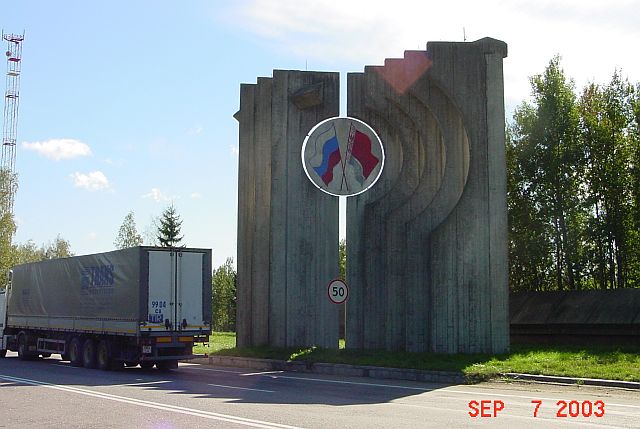
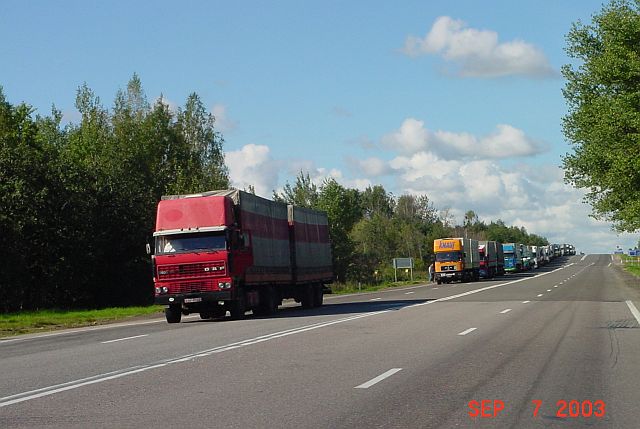
About 30km before Smolensk, Alexandr routed us by a monument he thought we should see – outside Kaytn (sp?) in the forest of death. Here the Russians, under Stalin’s written orders, executed 6,000 Polish officers with bullets to the back of their heads in 1939, the Nazis executed 135,000 Russians, and the NKVD (predecessor to the KGB) executed unknown thousands of their own undesirable citizens.

That’s the entry area. No charge and little signage. From here you walk a path that splits to your choice of mass graves and “killing holes”. On the left are the Russians, on the right are the Poles.
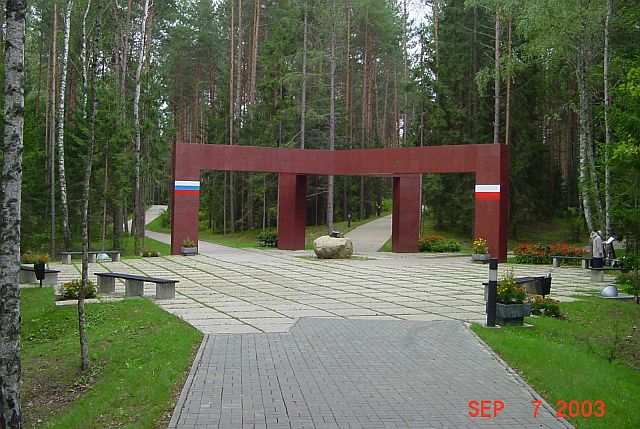
Following is the Polish monument. Rumor has it the Lech Walesa pressed the Russians to open the records on the murders of the Polish officers. They did, and after perestroika (everything’s after perestroika), in 1995 they opened the monument. The big wall has the names of the killed Poles. There’s an alter in front (with flowers) and a large brass bell at the base of the wall, which Alexandr made ring – a very haunting sound in such a place. The crosses on the ground cover mass graves. Everything was meant to rust – the color of blood.
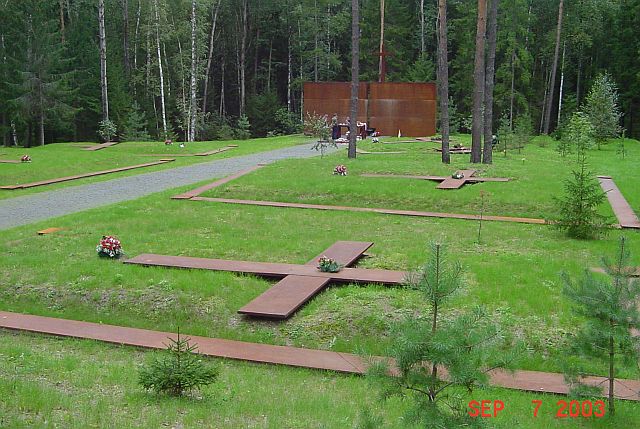
As a side note, we didn’t get to the town of Khatyn, just north of Minsk. The town was burned to the ground with all its inhabitants by the Nazis as a reprisal against resistance. Today it is a memorial to the 718 (that’s 718) Belarusian towns and villages “annihilated” by the Nazis. It has a “Memorial Wall” that lists the Nazi concentration/killing camps, not people – camps, in Belarus.
OK, back to the ride… Alexandr and Yuri waited for us just outside Smolensk. Here’s the town sign, and Charlie riding up to it.
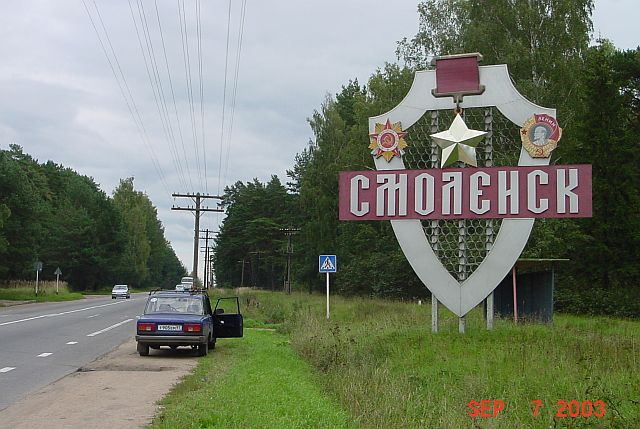
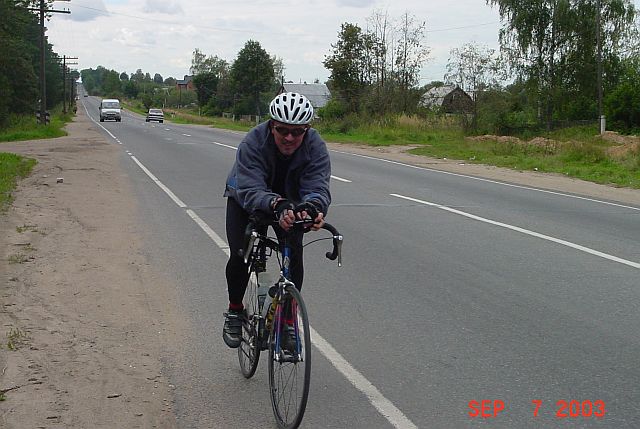
We followed our support team into town, across the bridge over the railroad yard, across the bridge over the Dnieper River, and up a big hill to the Rossia hotel, just across from the old part of Smolensk. For some reason I didn’t get a photo of our hotel – a 12 story block structure dating to 1980, but appearing much older, especially inside. We did however get a picture of the cavernous lobby (with Charlie) two guys Yuri hired to wash his car.
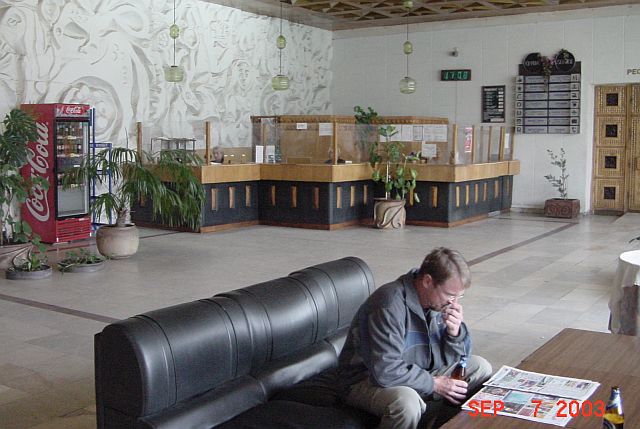
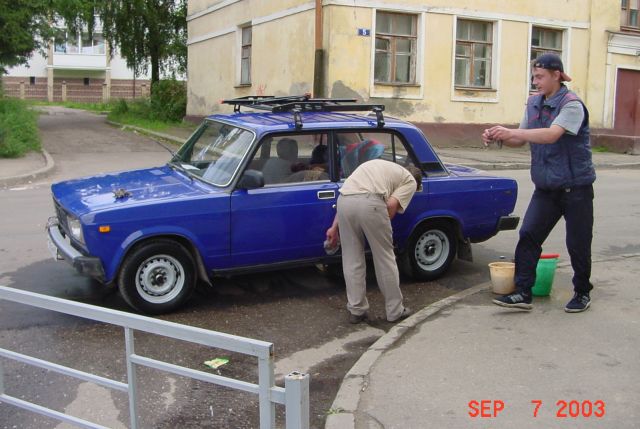
Charlie and I had been making jokes about how dirty the Lada was. We never realized it was bright blue until this moment.
A few words on Smolensk: Smolensk historically was a river port on the Dnieper River. It’s one of the oldest cities in Russia (300,000 population today). Today it is an important rail junction, a distribution point for the region’s agricultural products, a commercial, cultural and educational center.
“The city was already a commercial center in the late 9th cent., when it was the capital of the Krivichi tribe and a fortress and settlement for traders and artisans. It then fell under Kiev’s rule. Smolensk was sacked by the Mongols in 1238-40. The westward expansion of the grand duchy of Moscow made Smolensk a target of prolonged struggle between Moscow and Poland-Lithuania. It was captured by the Lithuanians in 1408, taken by the Russians in 1514, occupied by the Poles in 1611, and reconquered in 1654 by the Russians, to whom it passed by the Treaty of Andrusov (1667). Its location on the main route from Moscow to Warsaw made Smolensk a target for Napoleon I, who seized the city in Aug., 1812, after a brief but heroic resistance. Having burned Moscow, Napoleon retreated in November to Smolensk but was forced by the Russians under General Kutuzov to continue his retreat. The city, scene of some of World War II’s heaviest fighting, was captured by the Germans in 1941 and retaken by Soviet troops in 1943. Virtually razed, Smolensk was rebuilt with its original pattern largely preserved.”
Smolensk is trying to make something of itself. They have rebuilt some of the old city walls, invested in rehabilitating historic churches, reestablished some great museums and produce a tourist guide in Russian and bad English. In the 1000km/600mi between Minsk and Moscow, this is the one city worth a visit. Here, courtesy of Charlie, are photos of the wall/moat; a statue of the architect who designed the thing (6.5km long, 5.5m thick with 17 of the 38 original towers remaining); Uspensky sobor (Assumption Cathedral), a 300 year old Russo-Greek revival (300 years ago) structure; and some stone/metal sculpture of a guy climbing toward an eagle that Charlie could not definitively explain (he has theories).
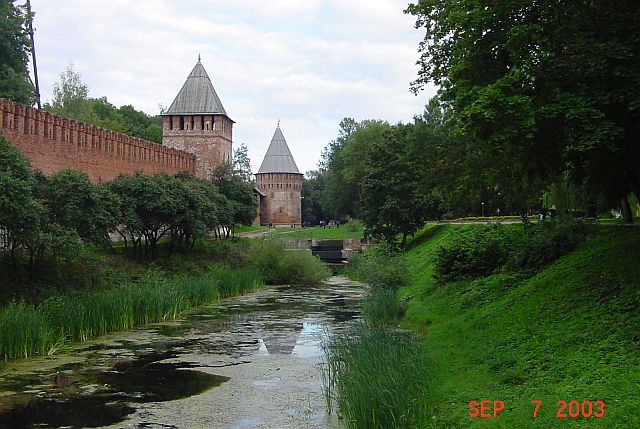
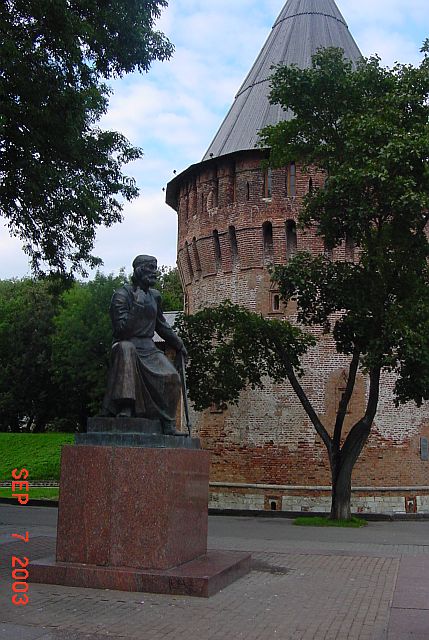
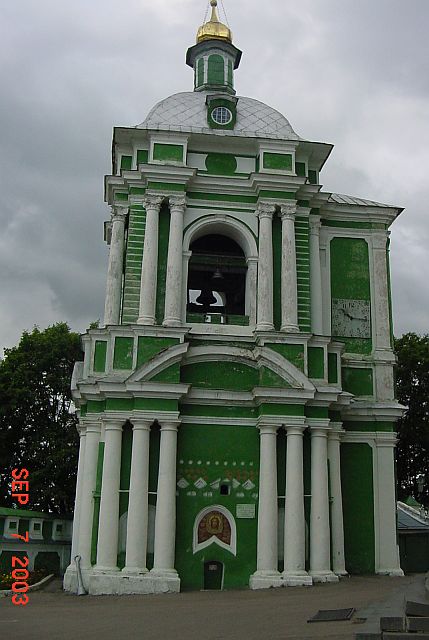
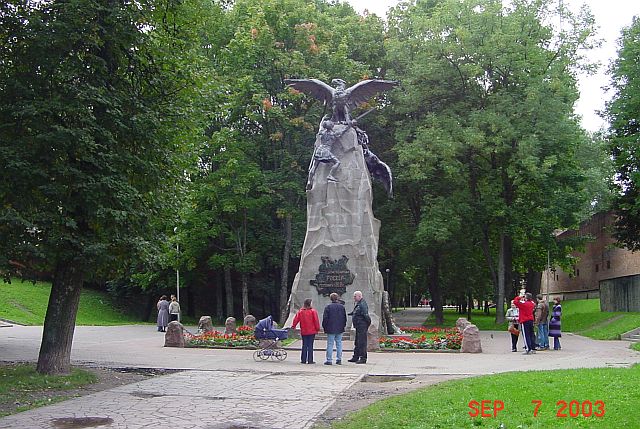
We had dinner at a restaurant/disco complex (Sunday night, very loud but almost no people) in the basement of the “Central Post, Telegraph and Telephone Building” in a private, non-smoking room. We’ve been eating mostly traditional Russian food for the past week. They start with a “salad”, which is usually some combination of meat, mushrooms and mayonnaise, go to a soup (borscht) course, then have a meal of meat, vegetables and potatoes. Charlie and I try to get US style salads, which they call “cold vegetables”, and usually succeed. The rest of the food is perfect for what we’re doing.
In the cool darkness we walked along the greenway outside the wall back to our hotel. Like the cities in Belarus, Smolensk has very few lights and little traffic after dark. The only people about are teenagers drinking beer.
Smolensk 7SEPT03 11:41PM

 September 6, 2003
September 6, 2003 